Abstract
This paper describes a rather simple coupling method for tripeptide enlarged haptens to phosphatidylethanolamine (PE) and the incorporation of these conjugates into liposomal model membranes (haptenated liposomes). These haptenated liposomes evoke a hapten-specific humoral immune response in mice. The magnitude of the response as measured by the appearance of direct plaque forming cells in the spleen is dependent on the route of immunization and the dose and epitope density of the hapten-PE derivatives. It was not possible to evoke an IgG response after either primary or secondary immunization with haptenated liposomes (as measured by the production of indirect plaques or mercaptoethanol-resistant antibody). These data, in addition to the observations that mice depleted of, or deficient in thymus-derived (T) lymphocytes respond to haptenated liposomes, indicate that these haptenated liposomes are T-cell independent antigens.
Full text
PDF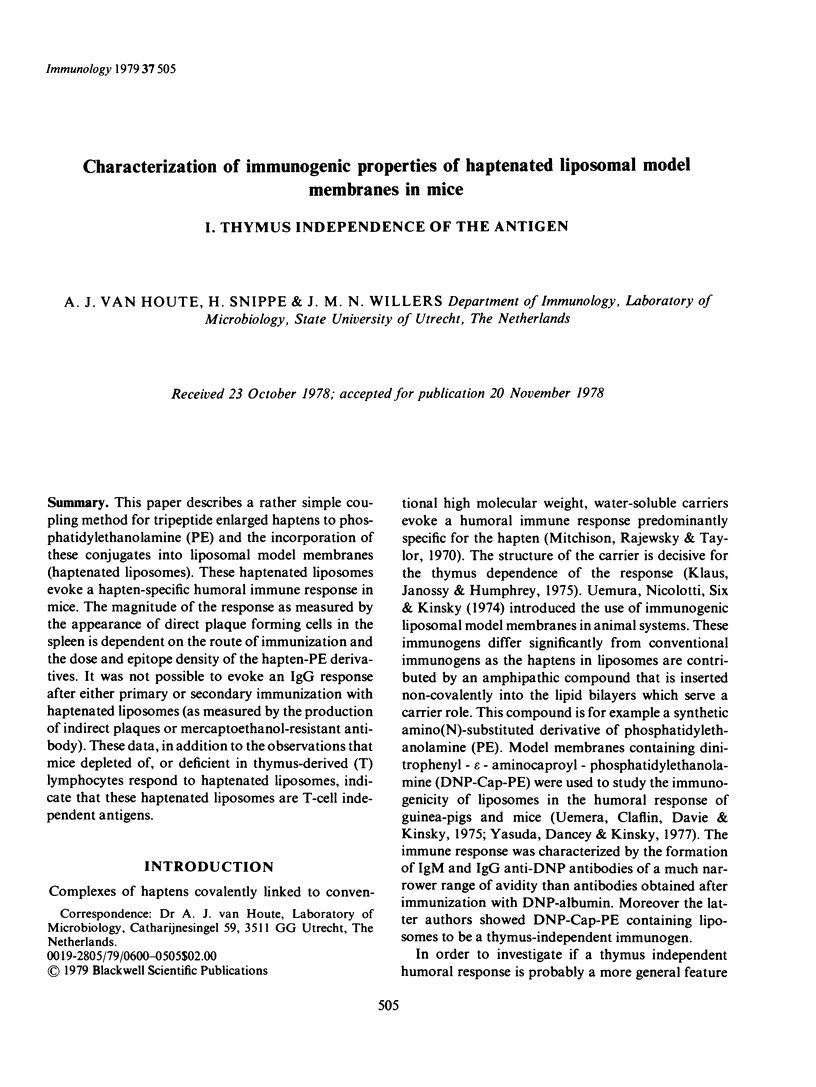
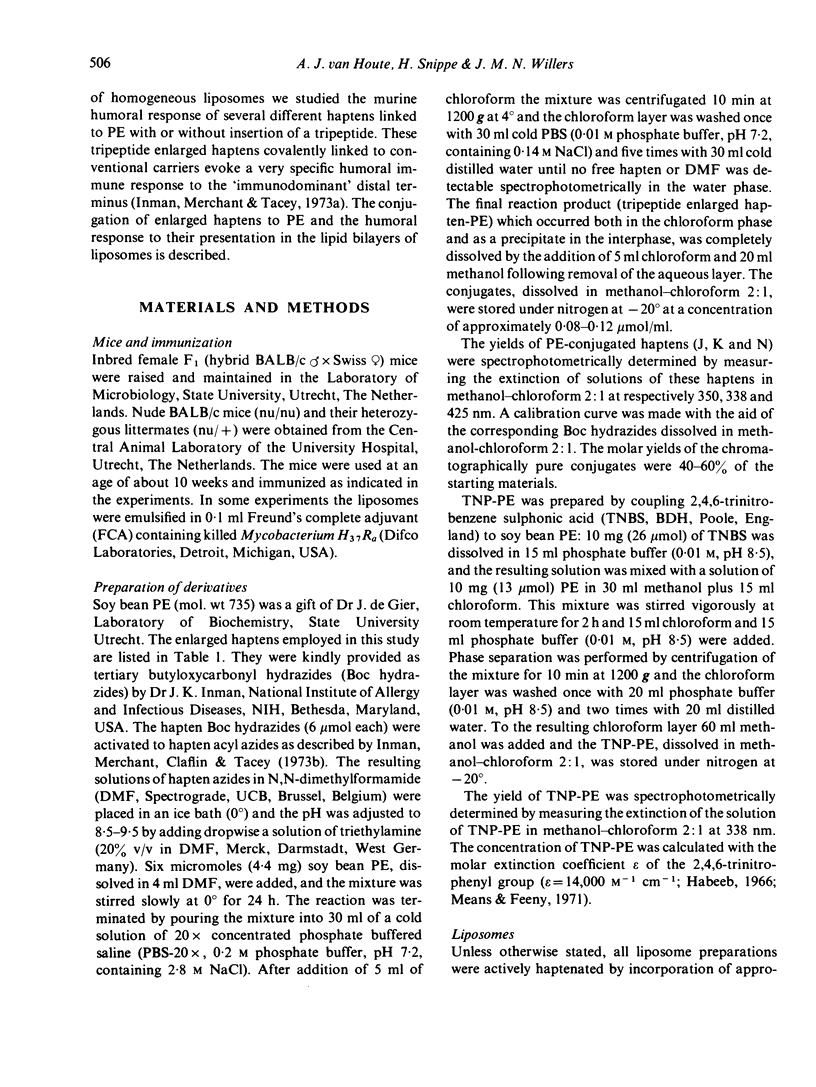
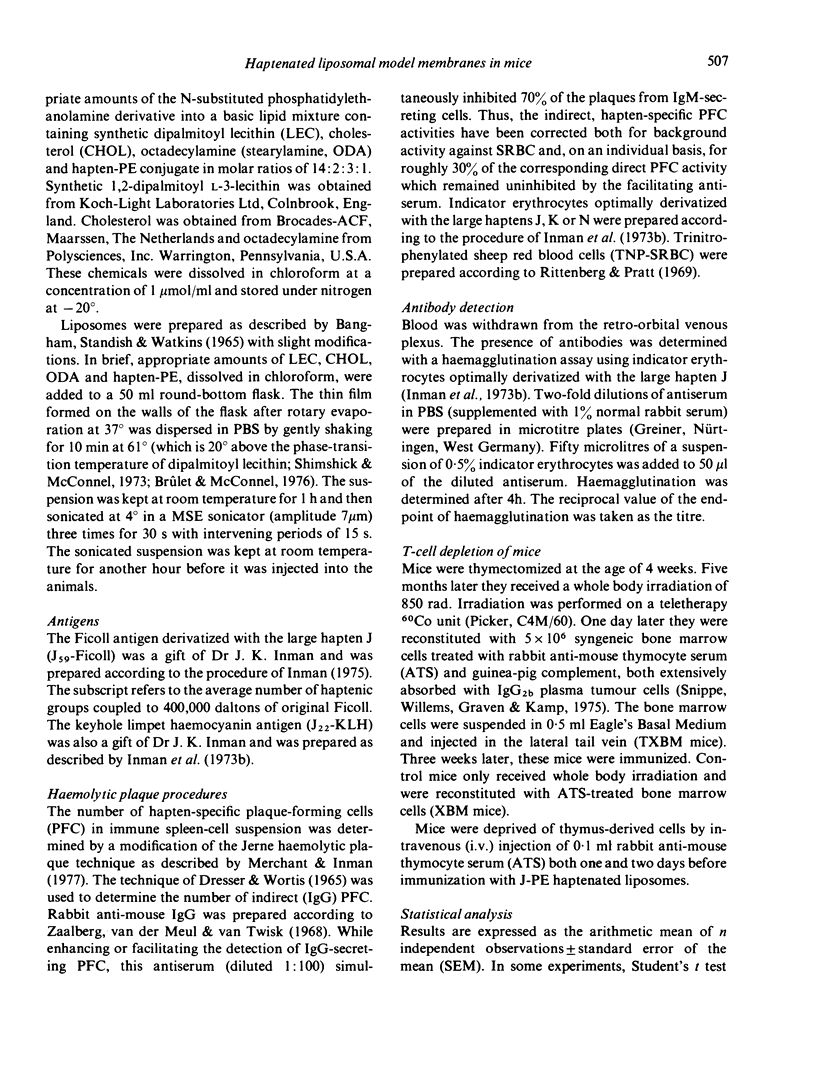
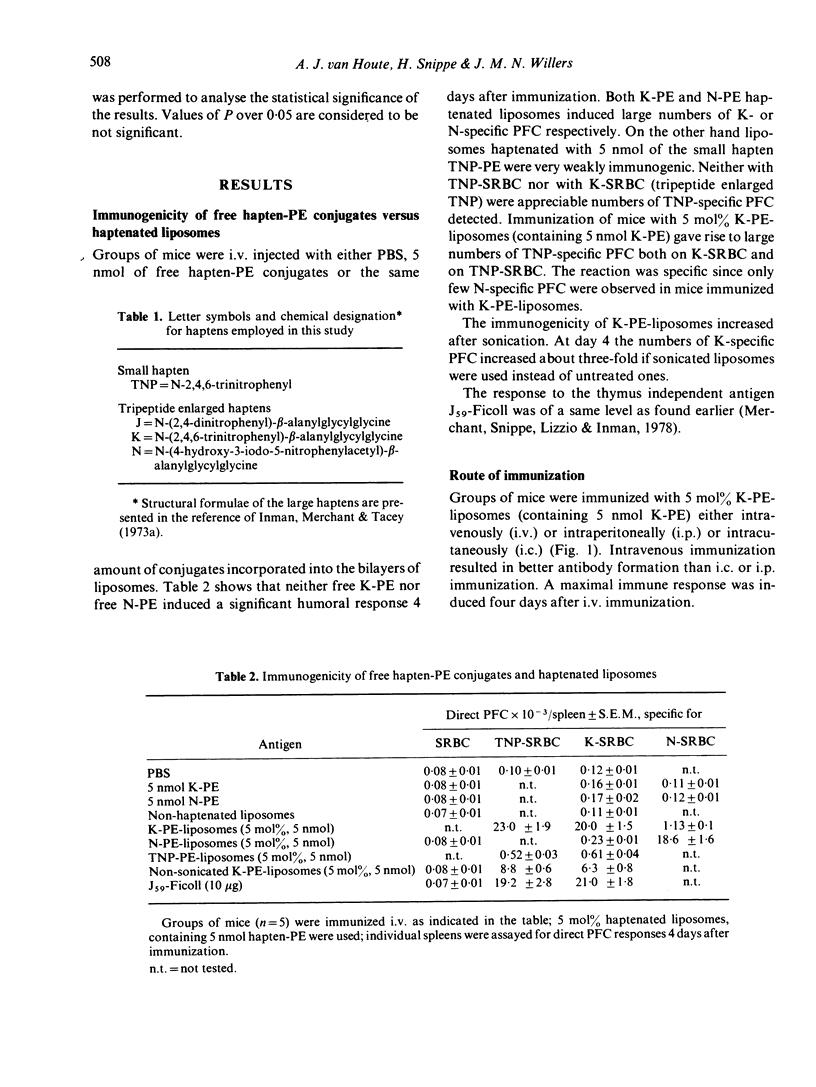
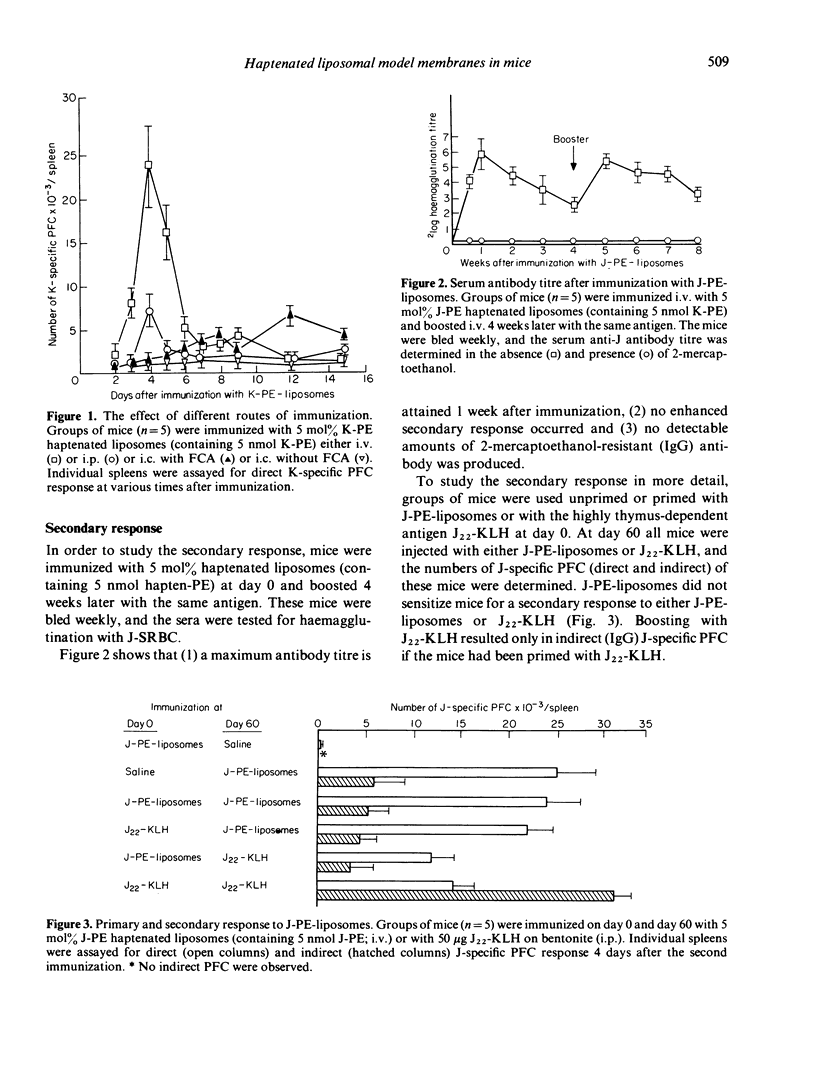
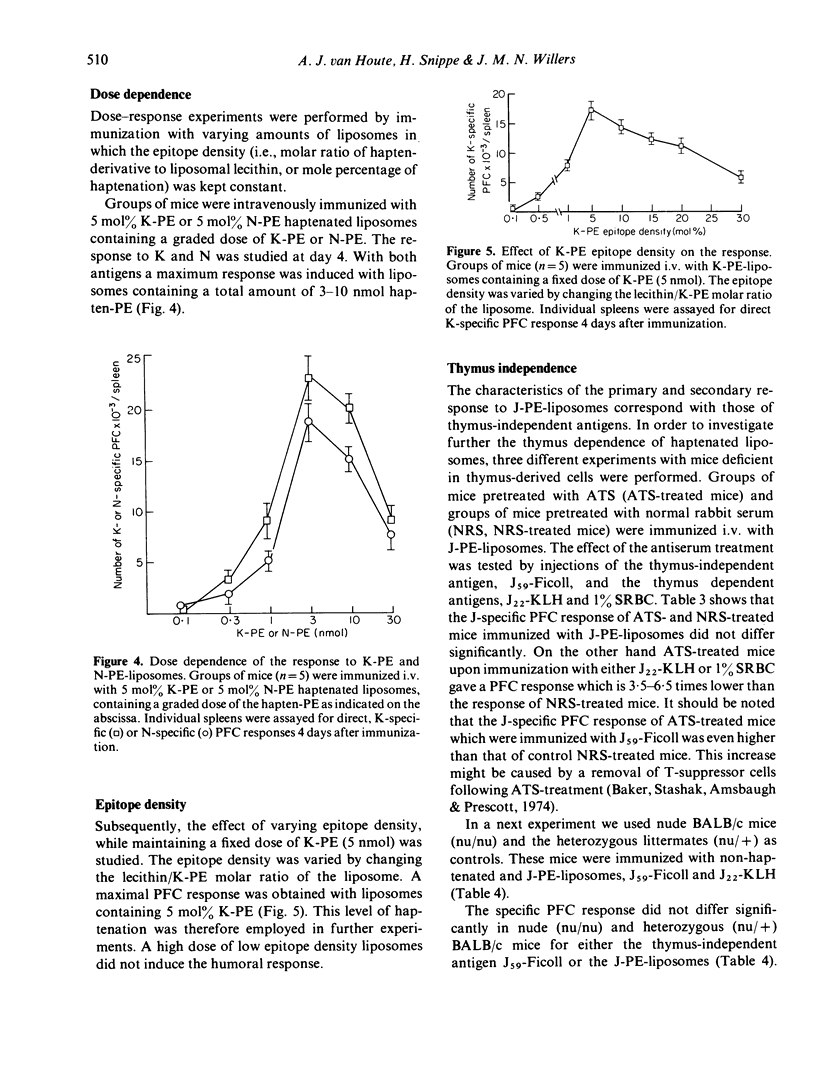
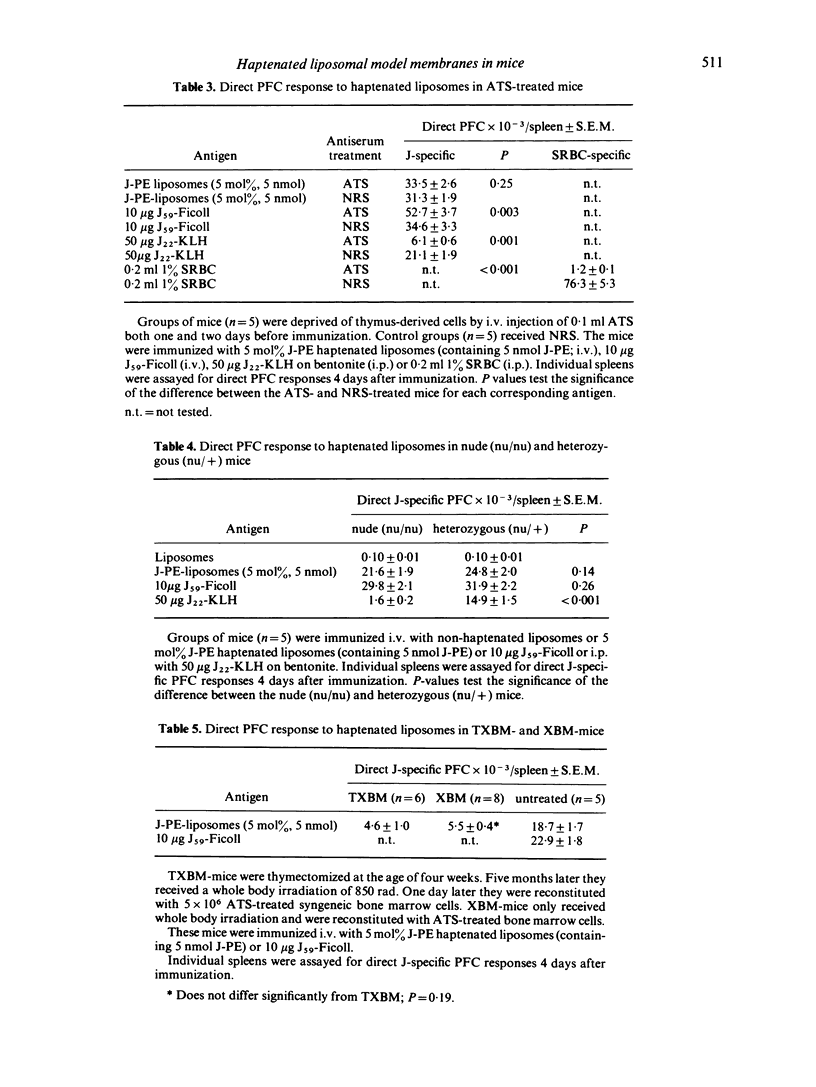
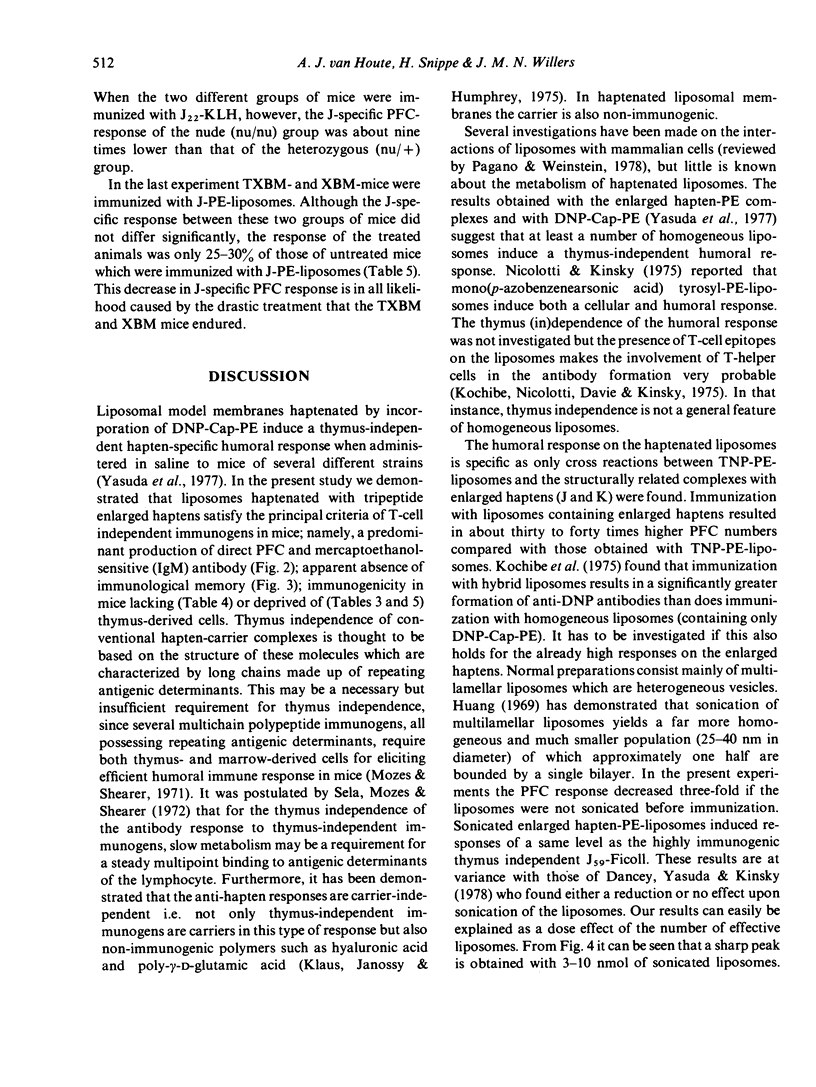
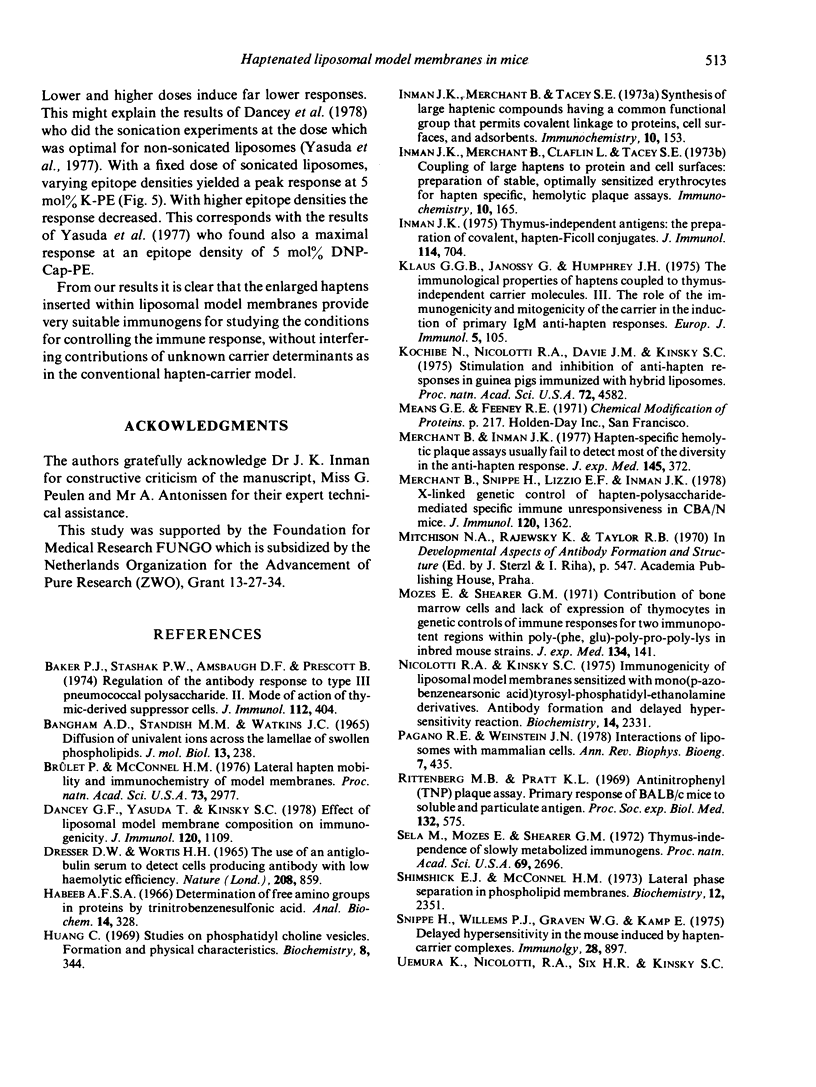
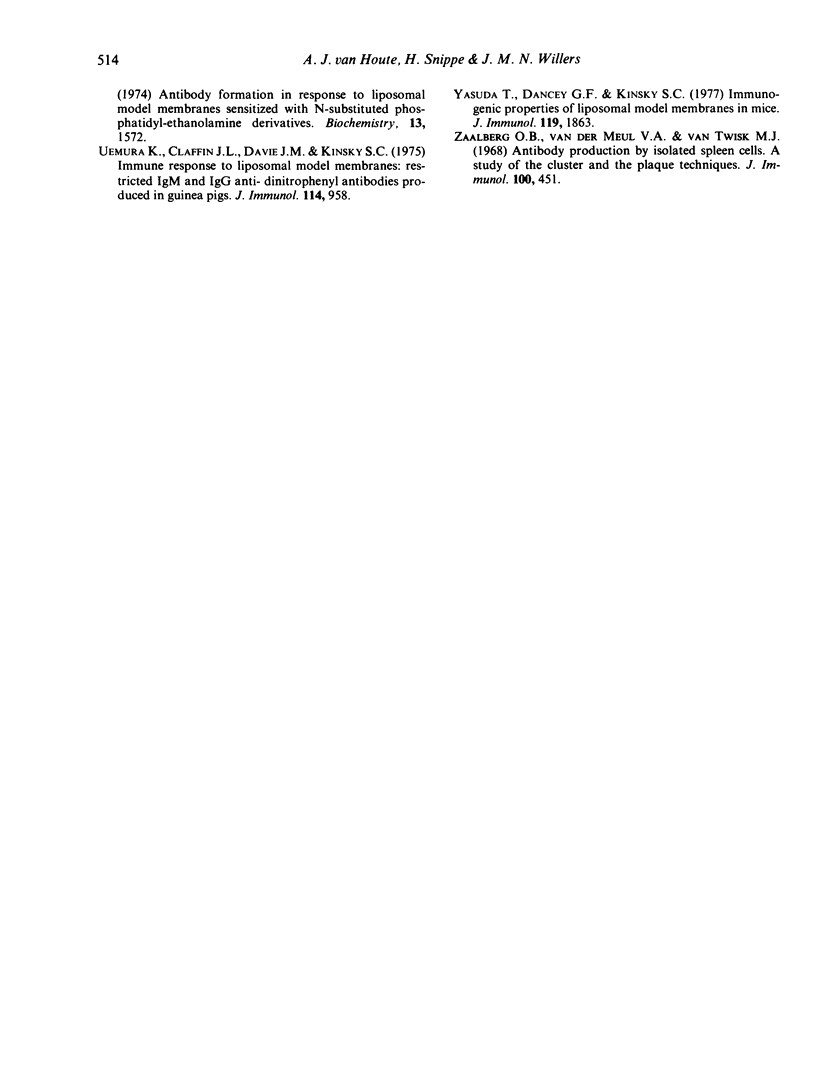
Selected References
These references are in PubMed. This may not be the complete list of references from this article.
- Baker P. J., Stashak P. W., Amsbaugh D. F., Prescott B. Regulation of the antibody response to type 3 pneumococcal polysaccharide. II. Mode of action of thymic-derived suppressor cells. J Immunol. 1974 Jan;112(1):404–409. [PubMed] [Google Scholar]
- Bangham A. D., Standish M. M., Watkins J. C. Diffusion of univalent ions across the lamellae of swollen phospholipids. J Mol Biol. 1965 Aug;13(1):238–252. doi: 10.1016/s0022-2836(65)80093-6. [DOI] [PubMed] [Google Scholar]
- Dancey G. F., Yasuda T., Kinsky S. C. Effect of liposomal model membrane composition on immunogenicity. J Immunol. 1978 Apr;120(4):1109–1113. [PubMed] [Google Scholar]
- Dresser D. W., Wortis D. H. Use of an antiglobulin serum to detect cells producing antibody with low haemolytic efficiency. Nature. 1965 Nov 27;208(5013):859–861. doi: 10.1038/208859a0. [DOI] [PubMed] [Google Scholar]
- Habeeb A. F. Determination of free amino groups in proteins by trinitrobenzenesulfonic acid. Anal Biochem. 1966 Mar;14(3):328–336. doi: 10.1016/0003-2697(66)90275-2. [DOI] [PubMed] [Google Scholar]
- Huang C. Studies on phosphatidylcholine vesicles. Formation and physical characteristics. Biochemistry. 1969 Jan;8(1):344–352. doi: 10.1021/bi00829a048. [DOI] [PubMed] [Google Scholar]
- Inman J. K., Merchant B., Claflin L., Tacey S. E. Coupling of large haptens to proteins and cell surfaces: preparation of stable, optimally sensitized erythrocytes for hapten-specific, hemolytic plaque assays. Immunochemistry. 1973 Mar;10(3):165–174. doi: 10.1016/0019-2791(73)90005-0. [DOI] [PubMed] [Google Scholar]
- Inman J. K., Merchant B., Tacey S. E. Synthesis of large haptenic compounds having a common functional group that permits covalent linkage to proteins, cell surfaces, and adsorbents. Immunochemistry. 1973 Mar;10(3):153–163. doi: 10.1016/0019-2791(73)90004-9. [DOI] [PubMed] [Google Scholar]
- Inman J. K. Thymus-independent antigens: the preparation of covalent, hapten-ficoll conjugates. J Immunol. 1975 Feb;114(2 Pt 1):704–709. [PubMed] [Google Scholar]
- Klaus G. G., Janossy G., Humphrey J. H. The immunological properties of haptens coupled to thymus-independent carrier molecules. III. The role of the immunogenicity and mitogenicity of the carrier in the induction of primary IgM anti-hapten responses. Eur J Immunol. 1975 Feb;5(2):105–111. doi: 10.1002/eji.1830050207. [DOI] [PubMed] [Google Scholar]
- Kochibe N., Nicolotti R. A., Davie J. M., Kinsky S. C. Stimulation and inhibition of anti-hapten responses in guinea pigs immunized with hybrid liposomes. Proc Natl Acad Sci U S A. 1975 Nov;72(11):4582–4586. doi: 10.1073/pnas.72.11.4582. [DOI] [PMC free article] [PubMed] [Google Scholar]
- Merchant B., Inman J. K. Hapten-specific hemolytic plaque assays usually fail to detect most of the diversity in the anti-hapten response. J Exp Med. 1977 Feb 1;145(2):372–389. doi: 10.1084/jem.145.2.372. [DOI] [PMC free article] [PubMed] [Google Scholar]
- Merchant B., Snippe H., Lizzio E. F., Inman J. K. X-linked genetic control of hapten-polysaccharide-mediated specific immune unresponsiveness in CBA/N mice. J Immunol. 1978 Apr;120(4):1362–1368. [PubMed] [Google Scholar]
- Mozes E., Shearer G. M. Contribution of bone marrow cells and lack of expression of thymocytes in genetic controls of immune responses for two immunopotent regions within poly-(Phe,Glu)-poly-Pro--poly-Lys in inbred mouse strains. J Exp Med. 1971 Jul 1;134(1):141–161. doi: 10.1084/jem.134.1.141. [DOI] [PMC free article] [PubMed] [Google Scholar]
- Nicolotti R. A., Kinsky S. C. Immunogenicity of liposomal model membranes sensitized with mono(p-azobenzenearsonic acid)tyrosylphosphatidylethanolamine derivatives. Antibody formation and delayed hypersensitivity reaction. Biochemistry. 1975 Jun 3;14(11):2331–2337. doi: 10.1021/bi00682a009. [DOI] [PubMed] [Google Scholar]
- Pagano R. E., Weinstein J. N. Interactions of liposomes with mammalian cells. Annu Rev Biophys Bioeng. 1978;7:435–468. doi: 10.1146/annurev.bb.07.060178.002251. [DOI] [PubMed] [Google Scholar]
- Rittenberg M. B., Pratt K. L. Antitrinitrophenyl (TNP) plaque assay. Primary response of Balb/c mice to soluble and particulate immunogen. Proc Soc Exp Biol Med. 1969 Nov;132(2):575–581. doi: 10.3181/00379727-132-34264. [DOI] [PubMed] [Google Scholar]
- Sela M., Mozes E., Shearer G. M. Thymus-independence of slowly metabolized immunogens. Proc Natl Acad Sci U S A. 1972 Sep;69(9):2696–2700. doi: 10.1073/pnas.69.9.2696. [DOI] [PMC free article] [PubMed] [Google Scholar]
- Shimshick E. J., McConnell H. M. Lateral phase separation in phospholipid membranes. Biochemistry. 1973 Jun 5;12(12):2351–2360. doi: 10.1021/bi00736a026. [DOI] [PubMed] [Google Scholar]
- Snippe H., Willems P. J., Graven W. G., Kamp E. Delayed hypersensitivity in the mouse induced by hapten-carrier complexes. Immunology. 1975 May;28(5):897–907. [PMC free article] [PubMed] [Google Scholar]
- Uemura K., Claflin J. L., Davie J. M., Kinsky S. C. Immune response to liposomal model membranes: restricted IgM and IgG anti-dinitrophenyl antibodies produced in guinea pigs. J Immunol. 1975 Mar;114(3):958–961. [PubMed] [Google Scholar]
- Yasuda T., Dancey G. F., Kinsky S. C. Immunogenic properties of liposomal model membranes in mice. J Immunol. 1977 Dec;119(6):1863–1867. [PubMed] [Google Scholar]
- Zaalberg O. B., van der Meul V. A., van Twisk M. J. Antibody production by isolated spleen cells: a study of the cluster and the plaque techniques. J Immunol. 1968 Feb;100(2):451–458. [PubMed] [Google Scholar]


